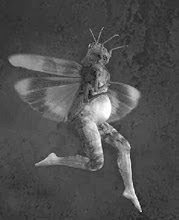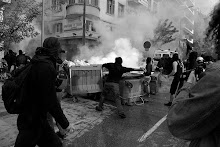In spite of their common boundaries, European countries are traditionally separate from each other and this separation and reciprocal lack of knowledge also applies to the revolutionary movement in struggle against individual States. The names that come to mind when one thinks of the Italy of years gone by tend to go no further than Lotta Continua, Prima Linea and the Red Brigades and, today, Autonomia and the Cobas.
In order to grasp what is happening now concerning a part of the Italian anarchist movement it is necessary to take a brief glimpse of the struggle in that country from the early seventies up until the present time.
Following the great insurrectional explosions of ’68, the next intensification of social struggle was to culminate in 1977 in the so-called ‘lead years’ folkloristically symbolised by the media through the P38. The Metropolitan Indians, mass demos and clashes with police, attacks on trade unionists, the looting of supermarkets, the spread of small acts of sabotage on various structures of exploitation were the order of the day. Hard demonstrations in the streets, tear gas and police bullets to disperse them. Comrades killed. Fights to the death between fascist youth and young communists.
Various extraparliamentarian organisations emerged during that period: Lotta continua, Potere Operaio, Potere Rosso in the communist milieu, and at a certain point clandestinity became the next step for many young comrades and was extended considerably as a result of intensive recruiting from within the organisations themselves. Not only the Red Brigades with their columns in many parts of the country, but numerous other communist tendencies went underground in the conviction that the time was ripe to attack the heart of the State, to overthrow a corrupt political and economic system and set themselves up in its place.
Such a discourse was naturally far from the intentions of the anarchists who, although present in the social struggles, attacks, sabotage, debate and various other initiatives, maintained a critique of the armed party in word and deed. Within the anarchist movement itself a heated debate was also taking place. This was centred around a critique of the ‘organisation of synthesis’ such as anarcho-syndicalism and the anarchist federation, and incorporated further debate concerning the use of revolutionary violence, i.e. the need to attack power in all its forms but using methods that were idoneous to the aims of anarchists, that is the destruction of power in all its forms through mass self-managed rebellion and insurrection leading to a social revolution that started deep within each individual, finally to become protagonists of their own life.
An attempt was made to form a libertarian clandestine structure, Azione Rivoluzionaria, and the latter carried out a considerable number of attacks (see Insurrection no 1). This also led to fierce debate within the anarchist movement: is it possible for such a structure to evolve the way anarchists want, or does it not simply turn out to be an ideological mystification of the usual closed specialist structure, albeit anti-stalinist in outlook?
Many meetings took place but the voice of anarchist critique often fell on deaf ears. Debates also proceeded on the pages of some of the publications of the time. The anarchist review Anarchismo in particular carried a progressively articulate methodolical critique and, drawing inspiration from the wide range of anonymous acts of sabotage all over the country, small actions which required not hierarchical specialisation but individual decision far from the heavy vindicative atmosphere of the stalinist ideology aimed at striking the heart of the State. In fact the social and economic set up was eveolving in such a way that now more than ever before was spreading over the whole country and no longer confined to the big industrial cities as it had been in the fifties and sixties. The question of number ‘let’s get a big organisation together then we’ll see’ came to be seen in another light, that of politics, far from the reality of revolutionary effectiveness.
Naturally this development was taking place parallel to developments in science and technology, now definitively being applied to all spheres of life.
Now we also saw a wide refusal of militarism, in particular military service at individual level. The anarchists were clear on this point. Against war, against militarism (no matter what colour) but not against arms in themselves which, although not of central importance in the way that they are for the armed parties (the armed wing of the proletariat), they are nevertheless also necessary for the attack on the exploiting enemy. Actions in this field go from total objection against military service, to desertion, to bomb attacks on army barracks, the desacration of military iconography, etc.
The years passed. The armed attack on the State in terms of centrality had come to an end and many of the 5,000 arrested in the early eighties began negotiating with the State in order to get out of a prospect of decades of prison meted out in multiple life sentences. Tactics went from outright delation (and it is here that the strategy of the pentiti, the ‘repentant terrorist’, took root. Captured militants underwent levels of torture which until then only proletarians had been submitted to as the norm and that, or fear of a prospect of long imprisonment (also a consequence of recruiting as opposed to mature choice in the class war), led to this breaking up of a situation which, had it remained solid, would have forced the State to find a solution itself, for its own reasons and because of relations with neighbouring States which were moving closer together in economic collaboration through a sanitisation of struggles of the past. 5,000 would have been too great a number to hide under the carpet. Instead, special prisons were built and special emergency laws were decreed. The prison reality gradually devolved from rebellion, mass escape attempts and rioting to the insertion in re-educative programmes of repentant ex-militants who had signed their definitice renunciation of armed struggle.
Subscribe to:
Post Comments (Atom)




No comments:
Post a Comment